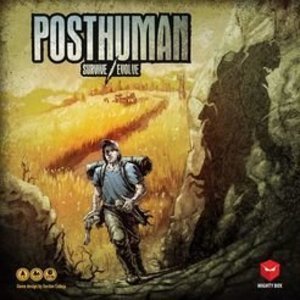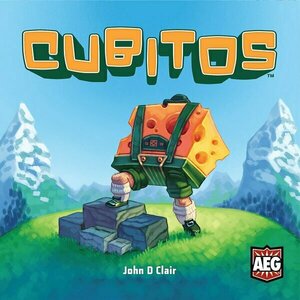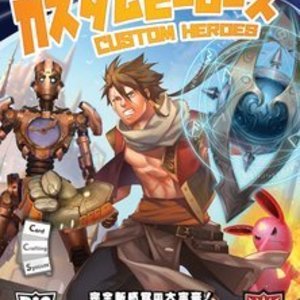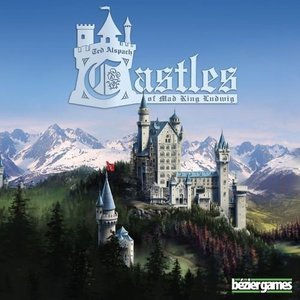Purple Phoenix Games (2266 KP) rated Posthuman in Tabletop Games
Aug 25, 2021
Posthuman is set in that dark post-apocalyptic horrorscape and is an exploration adventure game with character upgrading and dice-driven combat. The twist here is that humans are trying to escape the mutant creatures to The Fortress, a safe haven for all, but once infected may turn mutant and also turn on the party to prevent that glorious end. In this review, however, I will be playing through the solo rules, and they do not have players turning into mutants during the game. Bummer, eh?
DISCLAIMER: We are using the Kickstarter Deluxe version of the game. We do have the Defiant expansion from the KS campaign, but will not be using it for this review (I don’t think). Also, we do not intend to cover every single rule included in the rule book, but will describe the overall game flow and major rule set so that our readers may get a sense of how the game plays. For more in depth rules, you may purchase a copy from the publisher directly or from your FLGS. -T
To setup consult the rulebook, as there are so many decks of cards and character setup steps that need to happen that I just cannot detail here. Once setup your play area will look something like the photo below. Once setup is complete you are ready to begin your journey to The Fortress.
Posthuman is played over a series of rounds until the player wins or loses. The only way to win is to enter The Fortress before the Event deck runs out, and obviously the only way to lose is to run the Event deck out of cards or become a mutant by suffering five scars.
A round consists of several phases. The first phase is Event Resolution. The player will flip the top Event card and resolve its text. These Events could be a one-shot bad (or good) thing for the player, or may be an ongoing Seasonal Event that will stay in play until another Seasonal Event is drawn.
After the Events, characters will need to Eat to survive. Characters will be able to forage for food in a subsequent phase, but know that food is very important and if characters go too long without eating they will be suffering penalties of their Health and Morale.
Once fed (or starved, I suppose), the player will Declare an Action from the following: Camp, Forage, Scout, or Move (in multiplayer there is an additional action as well). To Camp players will forego any other action to heal their character. When a character Forages they will flip the current tile’s marker to show it may no longer be foraged and draw a Supplies card to see what supplies they will be able to gather. These could be more food tokens, ammo, equipment or weapons. To Scout a character will draw terrain tiles equal to the number of exits shown on their current terrain tile. The player will place the tiles however they want and this will provide insight into future locations and what they may hold. Lastly a player may Move into a connected terrain tile and begin having encounters upon it.
Most of the action in Posthuman comes as a result of having encounters on terrain tiles. Depending on where the character meeple is located on the Central Board track encounters will be drawn from the level one, two, or three decks and encountered immediately. Most of the encounters are combats, and I could write another whole post on combat, but I will spare you the details and merely say that combat is very involved and encompasses many steps to resolve. At the end of the combat a character may receive the encountered creature card as a VP trophy to be spent later on upgrades. The VP card may also instruct the player to move the meeple one space closer to The Fortress on the Central Board track. The other type of encounter card presents choices for the player to make or stat tests to overcome via die rolls.
Play continues in this fashion until the player wins by reaching The Fortress, or by losing to the forces set against them.
Components. This box is chock FULL of components and they are all super high-quality and enjoyable to play with. I do have a couple issues with some bits. Firstly, the player boards are quite small, and the tracking cubes are not meant for big meaty paws at all. Similarly, the tracking chits to be used for stats on the player board are flimsy and don’t really stay in place too well. Also the game comes with two different shades of gray player meeple colors and NOT a purple option. Shame! Shame! Shame!
When all is said and done Posthuman delivers an exciting experience on the table for a solo player and indulges the player’s need to roll dice on the regular. Just me? Didn’t think so. The combat is great, but I found myself discarding more enemies than defeating in some games and that is quite annoying. One game I refused to Scout at all and that totally bit me in the booty. So Scout, y’all.
Just know that playing this solo is NOT a cakewalk at all. I watched a playthrough video where the host won the game but nearly every roll of the die was favorable and every combat successful. Even still, she nearly ran out of time and lost the game. So games really can come down to the wire. Now, I haven’t really gotten very close to winning yet, but my day is coming!
I like this one a lot, and will certainly be going back to it for my solo plays. I have been playing some really great solo games lately, and I am very thankful for that. Posthuman, however, I don’t think will get much multiplayer action at my house. The rules are plentiful and the people I normally game with do not enjoy rules-heavy games. Similarly, I don’t think the theme is for everyone. I dig it, but different strokes and all. If you are in the market for a new (to you) game that can be played solo or multiplayer with an interesting theme and is pretty difficult, look up Posthuman. Just stay away from the mutants. These do NOT want to recruit you to their school for gifted people.
Purple Phoenix Games (2266 KP) rated Cubitos in Tabletop Games
Mar 17, 2022
Cubitos is a push-your-luck, dice building, racing game for two to four players. In it, players have runners that will be moving around a crazy race track, and another runner who keeps track of fans (the manager maybe?), and the first player’s runner to cross the finish line will be the winner! Now, managing movement and special abilities is where the game REALLY is, and it all boils down to which special dice are purchased and used, and whether Lady Luck will find favor or not. It’s a wild ride, so prepare your runner and let’s go!
To setup, place out one of the double-sided Racetrack boards, along with the Fan Track board. Runners for each player are placed at the Starting Line on the Racetrack board, and the other on the bleachers of the Fan Track. Each player receives a color-coded Player Board and nine gray starting dice. They receive a Phase Token to keep track of each phase in a round, and the starting player receives the Start Player Die. Each dice box is placed around the boards with the dice on top. All corresponding cards for each die type is placed by the dice box, and the game may now begin!
DISCLAIMER: We have adopted an unofficial variant/house rule that differs from the rules because we find it works better for us. During the phases where all players may play simultaneously we instead just have each player take a turn individually. -T
A turn in Cubitos is divided into two main phases with several sub-phases for each. During the main Roll Phase, players will first Draw dice from their personal Draw Zone (on the Player Board) and place them into the Roll Zone. Initially, players will have a hand size of nine, but that may be adjusted as the game progresses. Once the dice have been drawn the player then Rolls their dice. Every die face showing an icon is counted as a Hit, and every die showing a blank face is considered a Miss. All dice showing Hits are moved to the Active Zone of the board, and the player then decides if they wish to Push (their luck) and re-roll all the Misses in hopes of more Hits, or if they are done rolling. Once a player re-rolls their Misses, if the result is all Misses, the player Busts and must move ALL rolled dice to the Discard Zone on their board. However, players may continue to roll all Misses until they Bust or are content and stop.
The Run Phase then begins with players resolving their red die icons (crossed swords for attacks), and determining their other icons rolled for coins and movement. Feet icons (and certain dice special abilities) provide players with movement along the Racetrack board, and coins provide the player with purchasing power to buy new dice. Once a player’s Runner has landed on a reward spot on the board, the player receives the benefit and moves all dice used this turn to the Discard Zone on the Player board.
Every time a player Busts, or lands on a Fan icon on the Racetrack, the other matching Runner on the Fan Track board will move one spot along the track, and the player receives the benefits of the new space. These benefits are either an increase in hand limit of dice drawn, or more purchasing power in the form of credits. Reward spaces on the board could give players extra dice for free, allow players to remove dice from their collection, or even gain credits to be used at any time. The game continues in this fashion of each player taking their turns until one player crosses the finish line and wins!
Components. This box is chock full of tasty components that we all just adore. The boards and cards are all good quality and feature some fantastic art, and the custom dice are just so fun to handle. A truly ingenious use of folding arts is used when setting up all the dice boxes. Not only are they used in-game to remind players what icons are on each die face, but they also hold the dice during play, and store the dice in the box. I mean, triple duty dice boxes are where it’s at! Everything is super colorful and just a joy to play with each time. My one quibble is the very offensive block of cheese on the box cover. I am a big Chicago Bears fan, and seeing something so proudly displayed that even remotely resembles an homage to the Packers is such a shame to me. I really hope that wasn’t intentional, but I am also joking. Mostly.
The absolute best part about this game is the selection of action cards associated with each special set of dice. For example, the purple dinosaur dice could be paired with seven different cards, each with different abilities when the icon is rolled. Each color has a seven card deck, from which a card could randomly be used each game. The rulebook also offers 10 suggested combinations of cards, and also invites players to choose their own combos. This reminds me of a similar mechanic I first saw with the Dice Masters system, where each die’s faces could mean something completely different depending on the card associated with it. I loved that mechanic back then, and I do now as well.
I cannot believe I passed on this game for as long as I did. I mean, I like AEG-published games. We have reviewed John D. Clair games positively: Mystic Vale, with Custom Heroes and Space Base coming soon. Was it a subconscious dislike for the dumb cheese man on the cover? I am not too sure, but I am clearly glad to have it now. The cool dice. The interesting theme. The multi-use dice/card components. The fact they included both orange and purple dice. Am I into racing games now? The reasons are plentiful, and I just cannot wait for my next play of Cubitos. Maybe I can get my wife into it and it can be a staple in our rotation.
There are several other little rules that I did not mention here, but all in all I have had a blast every time I play Cubitos. I was certainly correct in wanting to add it to my collection, and having Josh teach Laura and me originally just adds a unique personal touch to the game for me. Creating lasting memories is a big reason I am so into board games in the first place, and I think Cubitos will hold a special place in my heart simply because I was able to play it with my best friends. They agree with me that this is a special game, and Purple Phoenix Games gives this a nonsquare 16 / 18. If you see this at your LFGS I highly recommend you pick up a copy. Don’t wait, like I did, because when you do get around to it, they just may be out of stock. And a suggestion: because the cheeseperson is wearing lederhosen, just refer to them as a great German friend. AND THAT’S IT. Go Bears.

Dungeon Academy
Tabletop Game
Time to enter a dungeon — a dungeon composed of dice! — to kill monsters and score as much as...
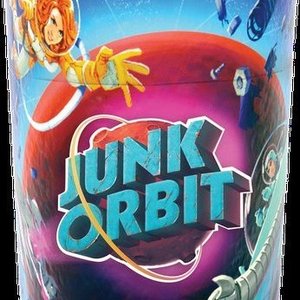
Junk Orbit
Tabletop Game
Space — the final junkyard. Good thing one planet's trash is another planet's treasure! In Junk...
BoardGames 2018Games SpaceGames
Purple Phoenix Games (2266 KP) rated Pocket Paragons in Tabletop Games
Sep 25, 2020
Pocket Paragons is a two player dueling card game where the winner is the player to knock out their opponent’s character(s). This game employs a lot of card play with minimal amounts of cards and tremendous amounts of double-think and flat out guessing as to what your opponent might be thinking.
DISCLAIMER: We were provided a copy of this game for the purposes of this review. These are prototype media set components, and all complete copies will have extra components including these shown. Also, it is not my intention to detail every rule in the game, but to give our readers an idea of how the game plays. You are invited to back it on Kickstarter, order from your FLGS, or purchase through any retailers stocking it after it is released. -T
To setup a game of Pocket Paragons, players will choose one character (or three in a Tournament Mode), all associated cards, and an HP/Energy dial (I am using dice for my game). Players will display in front of them their character’s main Character card as well as the Ultimate card. All other cards related to their character will begin the game in hand and will be ready to be played immediately.
A game of Pocket Paragons could range from one card played to several rounds and upwards of 10 minutes. Tournament play can be longer still. For this preview I will be describing game play for single games.
On a turn each player will choose one of the cards in hand to be played, lay it face-down on the table, and flip it once both players are ready. When the cards are flipped, the players will compare and check for Counters. Each card may counter other card types and will have text stating so (Example: the Malice card from above shows that it counters Agility cards). If a player can play a card to counter their opponent’s card then the countering player sends the opponent’s card back to their hand and will gain one Energy. If the card played had damage printed on it, the countered player will reduce their HP by the printed damage amount. However, if no cards were countered, then both cards will activate and assign any damage. The next round may now begin with players choosing cards to be played one by one until a player is knocked out of the game.
After a card is played and used the player will be discarding into a discard pile. The only way to regain these cards into hand is by playing a rest card (yellow sun). Using the rest cards at just the right time will certainly reflect the strategy of the player. Players may use a rest card at any time, but some red Weapon cards can immediately Execute an opponent if played while they are resting (think coup de grace in RPGs). Therefore, while waiting until all cards in hand are used before playing a rest card makes logical sense, smart players may be saving their Execute cards for that exact instance.
Components. Again, this is a prototype copy that cobbles six characters from multiple sets to create the Media Set we were sent. We have been informed that retail (or Kickstarter) boxes will contain six related characters and dials to track HP and Energy. The cards we were sent are of okay quality, and I do not believe this is the stock that will be used on the final game. The art and art style on the game is quite nice. Icons and placement are logical, and cards are easy to read and understand. The artwork is very colorful and one thing I VERY MUCH appreciate on this (because I almost was lost after taking the messy components shot below) is that each card belonging to specific characters show the same artwork in fade in the background. I had a hot flash (weird for a guy right?) when I was sorting the deck back together after playing it and not knowing exactly which cards belonged with which characters. So, thanks for that Solis Game Studio!
I truly enjoyed my plays of Pocket Paragons. The games are super quick, but certainly test your ability to out-think your opponent and try to guess when they might be using their rest card so you can bust out the Execute. And each character plays so differently from others that it’s truly a joy to try out each and every character you can to see which one resonates with your style of play. The art is fabulous with bright colors (a definite plus for me), and the learning curve is nice and smooth – anyone can play this in about three to five minutes of learning. If your collection is screaming for a super quick card game that can be played in under 10 minutes and you can get some brain cells moving around, then Pocket Paragons is for you. It’s certainly for me and my collection. I love everything about it and can see myself diving down the rabbit hole once more and more IPs are released. Oh boy, this is gonna hurt the wallet…
Back it on Kickstarter launching October 6, 2020!
Purple Phoenix Games (2266 KP) rated Custom Heroes in Tabletop Games
Feb 7, 2022
Custom Heroes is a fantasy/sci-fi-themed, customization, ladder-climbing, trick-taking card game for two to six players. In it players are using their hand of cards to win tricks (a la Tichu). The twist is that each card is able to be upgraded by using various Advancements that are added directly into the same sleeve as the base card. The winner of the game is they who amass 10 or more points and win a subsequent hand.
Before the first game after unboxing, all Character Cards will need to be sleeved. These Character Cards are numbered from 1-10 and come in six sets (one set of 10 cards for each player, at max player count). To setup the game, each player chooses a Player Screen to hide their resources and provide the scoring table. Shuffle the Character cards and deal each player a hand of 10 cards. For this review, I will be using the two-player rules. Players also begin with 1VP Token and 2 Power Tokens, along with an Ascended Form Advancement Card and Kodora Advancement Card. In a two-player game, players begin with three total Advancement Cards, as shown in the photo below. The rest of the VP Tokens and Power Tokens are placed (or thrown, in my case) on the table, and the remainder of the Advancement Cards are shuffled and placed in the bag to be drawn randomly throughout the game. The battle for tricks may now begin!
As with all (most?) trick-taking games, Custom Heroes is played over a series of rounds. However, Custom Heroes is played across three phases: Upkeep, Main, Scoring. During the Upkeep phase, the deck of Character Cards is shuffled and 10 cards are dealt to each player. On each player’s turn during the Main phase, they will decide if they would like to upgrade any card by sleeving Advancement Cards along with the Character Cards. These Advancement Cards are clear plastic and will alter the value of the card, provide special abilities, or provide modifiers to the card’s value. Sleeving new Advancements may be done at any time during the turn, before playing it, but the caveat is that ALL cards are shuffled and dealt to players after every round, so the chances of receiving that same card in future hands diminishes with each additional player at the table!
Once Advancements have been applied, or whilst applying, the players will determine the lead play. A lead could be a single card or several matching cards in a set. The following player will need to play a card, or cards, of the same number, but of higher value. For example, if a single 7 was led, only a single 8, 9, or 10 will beat it. However, if a pair of 5s was led, a pair of 6-10 will beat that lead. Players may pass if they cannot, or choose not to, beat the current trick, and can engage in play on a future trick. Once a player has run out of cards for the hand, or all players have passed. The first player to run out of cards, or the last player to play a card, wins the hand and receives the benefits listed on the scoring table shown below. Again, when a player earns 10 VP and wins a hand, they win!
A few notes about Advancement Cards. The Ascended Form card given to all players at setup will allow the player to win the trick for that round once played. It is essentially a wild insta-win card. That is, unless another player plays an Ascended Form on top of it and wins with the most recent Ascended Form. The Kodora card, however, can be played to the player’s tableau instead of as a card in a trick. When played this way, the player “bets” two VP Tokens that they will win the hand. If they do, they gain an additional two VP Tokens, but lose their bet if they do not finish in 1st Place. All other Advancement Cards may be added to the Character Card sleeve as long as the associated gem icon at the bottom is not already present in the sleeve. As there are four gem slots on Character Cards, each Character may be upgraded four total times.
Components. This one comes with a number of components of different types. The tokens are all small, but not too small, the bag is cool, but obviously the main attractions are the clear plastic cards and sleeves common to the Card Crafting System that AEG produced. I think I first saw this idea of layering plastic cards on top of one another in the Gloom series, though it may have existed even before that. I adore this idea and really fell in love with it when I was big into Mystic Vale, also from John D. Clair and AEG. So components for me get a big ol’ seal of approval. I love ’em.
Similarly, I think the gameplay gets a big seal of approval from me. Like I said, I was big into Mystic Vale for a while, but I think that Cusom Heroes, to me, trumps it in many ways. Though both boxes mention games approximately taking around 45 minutes, I found Mystic Vale to be much longer, mostly due to having to explain and re-explain rules and oddities to players at the table. It feels like Custom Heroes has cut down the complexity of gameplay, especially for newer gamers. I can bring out Custom Heroes and have it taught and played in under an hour – a feat I still haven’t mastered with Mystic Vale.
I think that I also prefer the trick-taking style of Custom Heroes a bit more. My family really enjoys playing Euchre at family reunions and other events, and while Custom Heroes isn’t a Euchre clone at all, the feel is very similar. There is still a led card, and cards that are more valuable to be played atop them in order to win tricks. While there isn’t necessarily any suits in Custom Heroes, the ability to trump an entire hand with an Ascended Form Advancement or other Advancements adds a layer (see what I did there) of strategy and tactics that is just so satisfying. I am a big fan of games that allow players to upgrade their starting resources, or level up their characters, and this one fits right inside a little 60 minute pocket and is relatively easy to teach and play.
All in all, I am so glad I found this one at my FLGS (well, not super local), and there was a big sale going on. I picked it up solely for the Card Crafting System logo and it was a big hit for me. This will completely replace Mystic Vale for me in my collection, and I couldn’t be happier with that. If you are looking for something quick, easy, but full of choices and modifications, this is certainly the game for you. It’s the game for me, and that’s why Purple Phoenix Games gives Custom Heroes a mostly-upgraded 5 / 6. Could this reach into my Top 10 someday, or earn a Golden Feather Award? It is entirely possible. We shall see with more and more plays. I am excited to give it many more plays and find out! Are you in?
The Marinated Meeple (1853 KP) rated Castles of Mad King Ludwig in Tabletop Games
Mar 8, 2018
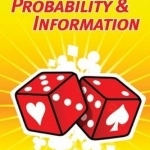
Bridge, Probability and Information
Book
While firmly rooted in mathematics, this is a book that aims to be accessible to any bridge player....
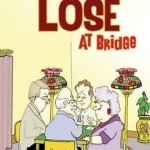
Why You Still Lose at Bridge
Book
S.J. Simon's classic bridge text book Why You Lose at Bridge, dispensing advice to the improving...
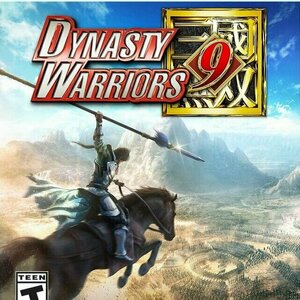
Dynasty Warriors 9
Video Game Watch
Based on real historical events and figures, DYNASTY WARRIORS 9 follows the personal struggles and...
action
